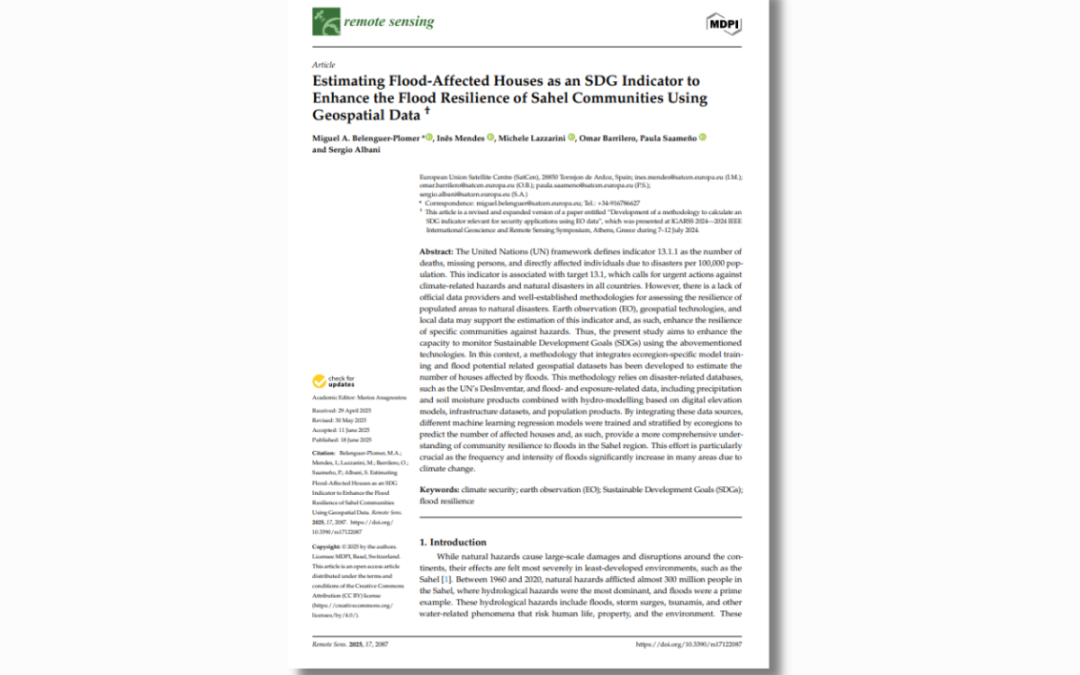The SDGs-EYES project has reached an important milestone with the publication of an open access article entitled “Estimating Flood-Affected Houses as an SDG Indicator to Enhance the Flood Resilience of Sahel Communities Using Geospatial Data” in the Remote Sensing journal, detailing the technical development carried out within the Climate security pilot. This study presents a novel methodology to estimate flood impacts on communities, leveraging Earth observation (EO) and geospatial technologies. By providing actionable insights into community resilience, the research contributes directly to SDG 13 (Climate Action).
Climate security pilot addresses a critical gap in monitoring climate-related hazards in the Sahel, where official data on disaster impacts is often incomplete or inconsistent. The study introduces an innovative methodology that combines ecoregion-specific model training with flood-related geospatial datasets to estimate the number of houses and people affected by floods. The approach integrates multiple data sources, including the UN’s DesInventar disaster database, precipitation and soil moisture products, hydrological modelling using digital elevation models, infrastructure and land cover data, as well as population data. Machine learning regression models were then trained and stratified by ecoregions to provide accurate predictions of flood impacts.
This methodology not only enables a better understanding of community resilience but also has the potential to support early warning systems and informed decision-making for local authorities and humanitarian agencies. The results demonstrate the potential of EO and geospatial technologies to monitor SDG indicator 13.1.1 (i.e., the number of deaths, missing persons, and directly affected individuals due to disasters per 100,000 population) in regions where data is lacking.
The publication of this study highlights SDGs-EYES’ commitment to applying cutting-edge EO technologies to real-world challenges. By enhancing the capacity to monitor climate security and community resilience, the Climate Security pilot sets a precedent for the use of EO in supporting sustainable development and disaster preparedness across vulnerable regions.

